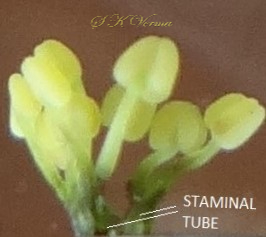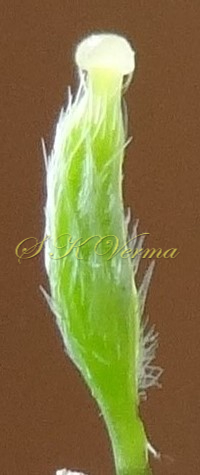DALBERGIA
Dalbergia
L. f., Suppl. Pl. 52: 316. 1782; Baker in Hook. f., Fl. Brit. Ind. 2: 230. 1879; Duthie, Fl. Upper Gang. Plain 1: 242. 1903; Parker, For. Fl. Punj. ed.3. 166. 1956; Fl. Pak. @ eFloras.org. p. 56; Fl. China @ eFloras.org. 10: 121.
Trees, shrubs or woody climbers. Leaves alternate, imparipinnate, rarely unifoliate; stipules often small and caducous; leaflets alternate, rarely subopposite, stipels absent. Inflorescence terminal or axillary cymes, racemes or panicles, usually numerous-flowered; bracts and bracteoles usually small, usually caducous. Flowers bisexual, zygomorphic, 5-merous, perigynous, small. Calyx campanulate, 5-toothed; teeth small and unequal (lowest tooth usually largest, upper pair usually wider than others and partially connate). Corolla papilionaceous, white, pale green, or rarely purple; vexillum ovate, oblong or orbicular; wings with base cuneate, truncate or sagittate; keel often boat-shaped, +/- united above; petals clawed. Stamens 9 or 10, monoadelphous, usually united in an open sheath, or diadelphous (5+5 or 9+1); anthers erect, small, dehiscent by short apical slits. Monocarpellary, ovary stipitate, few-ovuled, placentation marginal; style usually incurved, long or short; stigma terminal, small, capitate. Fruit elliptic-oblong to oblong, usually samaroid (strongly flattened, translucent, raised over seeds), 1-4 seeded, indehiscent.
274 species
Dalbergia sissoo
Dalbergia sissoo
Roxb., Fl. Ind. 3: 223. 1832; Baker in Hook. f., Fl. Brit. Ind. 2: 237. 1879; Parker, For. Fl. Punj. ed.3. 166. 1956; Gamble, Fl. Pres. Madras 384 (270). 1918; Fl. Pak. @ eFloras.org. p. 56; Fl. China @ eFloras.org. 10: 124; keralaplants.in
Trees with rough, grey bark and mainly longitudinal furrows. Branches numerous, horizontally spreading; young shoots pubescent. Stipules caducous, lanceolate, pubescent. Leaves imparipinnate, 12-15 cm long with rachis 3.5-7.5 cm long; leaflets 3-5; petiolules 8-10 mm, initially puberulent, ultimately glabrous; blades 3.5-6.5 cm, green when young, shiny when old, suborbicular, broadly ovate, occasionally rhombic-obovate, apex acuminate puberulent when young, glabrous when old. Inflorescence panicles, axillary, short ca. 7 cm composed of several short spikes with sessile to subsessile flower; rachis and bracteoles puberulent. Flowers bisexual, zygomorphic, 5-merous, perigynous, nearly sessile, fragrant; bracts caducous, lanceolate, pubescent. Calyx campanulate, 5-7 mm (enclosed within 2 large, broadly ovate, membranous, very caducous bracteoles), puberulent outside, 5-toothed; teeth shorter than tube, upper pair rounded, lateral 2 subacute, shorter than lowest, lowest rather narrowly lanceolate. Corolla papilionaceous, yellowish white; petals rather long clawed; vexillum ca. 8 mm x 5 mm, broadly obovate, emarginate; wings and keel oblanceolate, base without auricles, cuneate, attenuate to claw. Stamens 9, monoadelphous, tube small, slit on the upper side only; anthers uniform. Ovary oblong, pubescent, with rather long stipe ca. 4.5 mm, unilocular with 4-6 ovules, placentation marginal; style very short glabrous; stigma capitate. Legumes pale brown when dry, linear-oblong to strap-shaped, 3.7-10 cm x 0.6-1.3 cm, leathery, glabrous, faintly veined opposite,1-4-seeded.
Common Names: lndian Rosewood, Sissoo Tree; Shisham, (Hindi), Tahli (Punjabi)
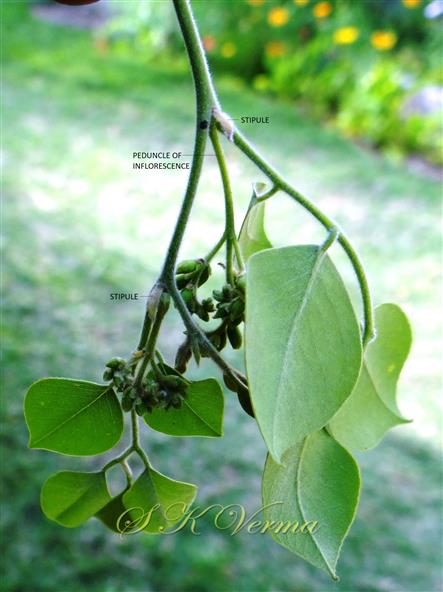
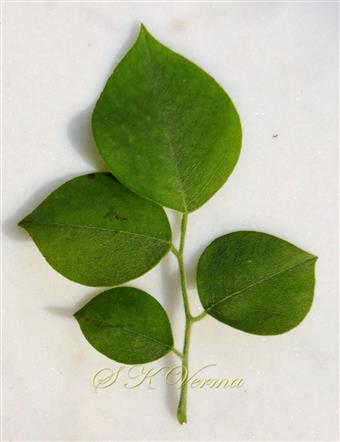
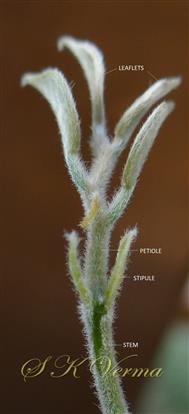
-DSC00979.jpg)
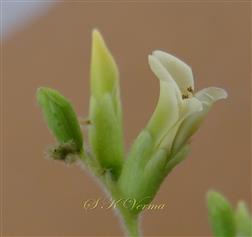
-DSC01014.jpg)
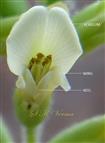
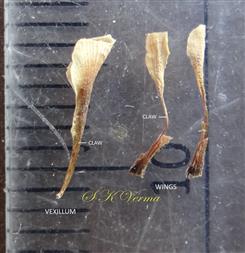


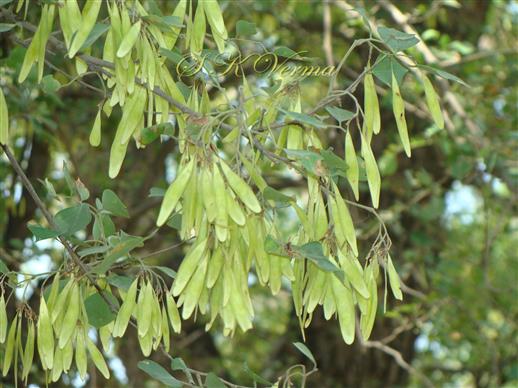




-DSC00979.jpg)

-DSC01014.jpg)


